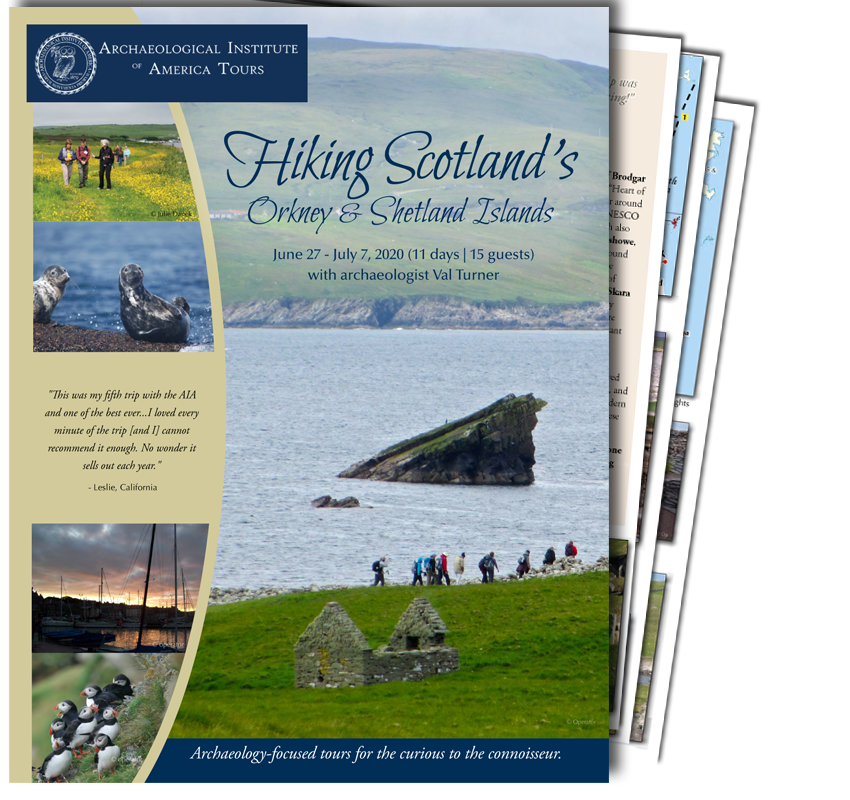This tour has been canceled for 2020. The 2021 departure of this tour is in the planning stages, to be contacted when the tour becomes available, please call 800-748-6262 or email aia@studytours.org.
This is the perfect opportunity to explore all that Scotland’s Northern Isles have to offer: prehistoric stone circles, burial chambers, and settlements; quaint villages; huge seabird colonies; and remarkable plant life—all amidst dramatic landscapes. This will be Scotland seen slowly, with time for in-depth exploration at each site. The Orkney and Shetland islands have an amazing wealth of archaeological sites dating back 5,000 years. Together the islands have more than 18,000 known sites, with new discoveries being made every year. This archaeological saga is worth the telling, and nowhere else can the evidence be seen in more glorious a setting.
Highlights:
- The UNESCO World Heritage site on Orkney, which includes the chambered tomb of Maeshowe, estimated to have been constructed around 2700 B.C.; the Stones of Stenness; the 4,000-year-old Ring of Brodgar, one of Europe’s finest Neolithic monuments; Skara Brae settlement; and associated funerary monuments and stone settings. These are unquestionably among the most important Neolithic sites in Western Europe.
- “The Crucible of Iron Age Shetland”—including Mousa Broch, the best-preserved known broch in the world, Old Scatness, and Jarlshof—where the lack of intensive modern farming means that the preservation of these sites and their landscapes is exceptional.
- The Isles are a birdwatcher’s paradise, and one of the major seabird breeding and feeding areas in the North Atlantic. More than a million birds breed in very large colonies.
- All meals are included, and you will enjoy comfortable accommodations: four nights at the elegant Lynnfield Hotel, a comfortable overnight ferry from Orkney to Shetland and from Shetland to Aberdeen, a night at the Scalloway Hotel, and two nights at the remote and charming Busta House Hotel.
- Limited to just 15 guests.
"This was my fifth trip with the AIA and one of the best ever...I loved every minute of the trip [and I] cannot recommend it enough. No wonder it sells out each year." - Leslie, California
Pricing:
$6,245 (13-15 participants) per person double occupancy
$6,445 (10-12 participants) per person double occupancy
$815 single supplement (limited availability)
Single room supplement will be charged when requested or required. With fewer than 10 participants, a small group surcharge may be added.
